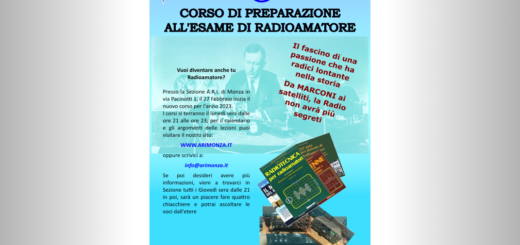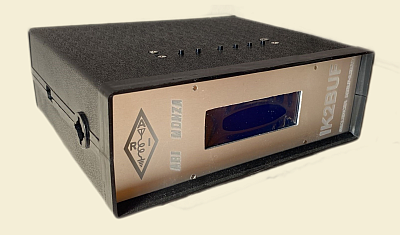contatto 24 settembre 2019
ARISS school contact planned for Boulder, CO, USA
International Space Station school contact has been planned for Nick Hague KG5TMV with participants at University of Colorado Amateur Radio Club, Boulder, CO, USA
The events is planned Tuesday September 24, 2019. It is scheduled to begin at approximately 17:43 UTC, which is 19:43 CEST.
The contact will be a telebridge operated by IK1SLD. The downlink signals will be audible in parts of Europe on 145.800 MHz
The contact will be livestreamed from the Ground Station at www.ariotti.com/ <www.ariotti.com/> starting about 15 min before AOS
Also Tuesday,September 24, 2019, a contact is scheduled for a cosmonaut with a school in Bulgaria at 16:10 UTC (18;10 CEST). This will be a direct, audible in parts of Europe. The contact will probably be in Russian. The ISS call sign will be RS0ISS.
Event presentation
Northridge Elementary School is a STEM focus school within the St. Vrain Valley School District in Longmont, Colorado. 320 students attend our school, and 47 of these students are in fourth grade.
At Northridge, every student belongs to every teacher. Our mission statement is, “To meet the academic and behavioral needs of all students using rigorous and high quality instruction while respecting diversity and partnering with parents and the community.” Whether in the classroom, the cafeteria, or the hallway, we believe that everyone must work together to ensure that all students achieve high levels and become responsible members of our diverse society. We know that STEM education is only successful if it is accessible for all students, no matter what their background or life circumstances may be. This begins with relationship building between teachers, students, parents, and administration.
Our population is very diverse. Therefore, building communication skills through the use of accountable talk and sentence frames is critical to student success. Students who might not otherwise be able to communicate are able to express their ideas and give feedback to their peers, as well as support their claims with evidence from research, grade level texts, or experiment data.
The elements of our STEM By Design model, which include integration, 21st century skills, problem solving, personalized learning, and forming connections, are embedded into everything teachers and students do and believe. Students learn through interdisciplinary units that dissolve boundaries across academic subject levels through authentic design challenges. Students engage in inquiry and problem-based activities in order to help master content and practice the elements of STEM by design.
We believe in preparing students for careers that do not exist yet through authentic learning opportunities, as well as equitable access to quality learning tools, technology, and resources. Our goal is for students to understand the relevance of their learning in their own lives and in the world so that they feel empowered to explore careers in STEM fields.
University of Colorado – Boulder HAM Radio students have been coming to our school to teach 4th grade students about sound waves, GPS, amateur radio, and life on the ISS. We are so excited for this exciting and engaging learning opportunity!
Questions:
1. Izack: What work do you do on the space station?
2. April: How do you eat and walk in space?
3. Ezren: How do astronauts return to Earth safely?
4. Lupe: What is it like to float in space?
5. Ashly: How do you take a shower?
6. Genesis: How do you use the bathroom in space?
7. Glenn: Please explain the science behind sending the ISS into orbit. Can you please explain the escape velocity needed?
8. Johan: How do you sleep in space?
9. Samantha: What does space look like from your view?
10. Yareli: Does the International Space Station get close to the Sun?
11. Aby: What do you do when you get hurt in space?
12. Britney: How many days can you stay up in space before you need to return to Earth?
13. Daniel: Besides Ham Radio, what other ways do you communicate with people on Earth?
14. Rogelio: How long does it take to get to space?
15. Abi: How does the space station move?
16. Anthony: How does gravity affect solids and liquids?
17. Ms. Hillmer: How hard was it to get in and out of the spacesuit?
18. Mrs. Mathews: How does your body change in space?
19. Mrs. Sadler: What does your daily schedule like?
20. Mrs. Garner: What do you do on your time off?
About ARISS:
Amateur Radio on the International Space Station (ARISS) is a cooperative venture of international amateur radio societies and the space agencies that support the International Space Station: NASA, Russian Space Agency, ESA, JAXA, and CSA. The US Center for the Advancement of Science in Space (CASIS) and the National Aeronautics and Space Administration (NASA) provide ARISS special support.
ARISS offers an opportunity for students to experience the excitement of Amateur Radio by talking directly with crewmembers on board the International Space Station. Teachers, parents and communities see, first hand, how Amateur Radio and crewmembers on ISS can energize youngsters’ interest in science, technology, and learning.
The primary goal of ARISS is to promote exploration of science, technology, engineering, and mathematics (STEM) topics by organizing scheduled contacts via amateur radio between crew members aboard the ISS and students in classrooms or informal education venues. With the help of experienced amateur radio volunteers, ISS crews speak directly with large audiences in a variety of public forums. Before and during these radio contacts, students, teachers, parents, and communities learn about space, space technologies, and amateur radio. For more information, see www.ariss.org <www.ariss.org/>, www.ariss-eu.org <www.ariss-eu.org/> and www.amsat-on.be/hamtv-summary/ <www.amsat-on.be/hamtv-summary/>.






